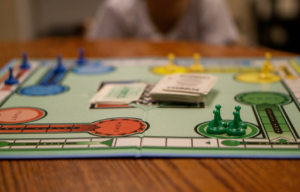OnlyFans has become a household name, primarily known for its adult content. But did you know there’s a whole world of non-explicit creativity waiting to be explored? From artists showcasing their talents to pet lovers sharing adorable moments, OnlyFans is brimming with hidden treasures that cater to diverse interests.
If you’re curious about what else this platform offers beyond the expected, you’re in for a delightful surprise. You can use Only Finder to discover these awesome creators. Okay, now here are some remarkable accounts and niches that might just inspire your next online adventure.
Art and Creativity

ArtisticAnnie is a gem on OnlyFans that showcases the beauty of creativity. This talented artist shares her passion for painting and illustration in a way that invites you into her imaginative world. Subscribers can enjoy behind-the-scenes peeks at her creative process.
From initial sketches to stunning finished pieces, Annie provides insights that inspire both aspiring artists and art lovers alike. What sets her apart is not just the artwork but also the personal touch she adds. Engaging stories accompany each piece, giving context to her work and making it relatable.
Pet Lovers
OnlyFans isn’t just for adult content. Many creators are sharing their love for pets in delightful ways. You can find dedicated pet lovers showcasing everything from adorable dog tricks to heartwarming cat videos. One of them is Only Paws. This creator offers an inside look at the daily lives of their furry friends, providing a sense of community among animal enthusiasts.
Some creators even share training tips or discussions on pet health. Their genuine passion shines through each post, creating engaging content that resonates with fellow animal lovers. The platform allows for direct interaction too. Fans can ask questions and get personalized advice about caring for their own pets.
Cooking and Recipes

Who said that OF is just for adult content; it’s also a platform for culinary enthusiasts. Many creators, like Cooking With Classie, share their cooking adventures and delicious recipes, turning the site into a haven for food lovers. Imagine scrolling through enticing videos of gourmet meals being prepared step by step. From quick weeknight dinners to elaborate weekend feasts, there’s something for everyone.
These accounts often provide tips that might not be found in traditional cookbooks. You can discover unique cultural dishes too. Creators showcase family recipes passed down through generations or even experimental fusion cuisine ideas. It’s like having a personal chef guiding you from your kitchen.
Mental Health and Mindfulness
OnlyFans is more than just adult content. Some creators focus on mental health and mindfulness, providing valuable resources for subscribers seeking support. MindfulMia and their fellow creators often feature guided meditations, breathing exercises, and daily affirmations. Subscribers can learn techniques to manage stress and anxiety in a practical way.
Creators share their personal stories, fostering a sense of community among followers. This connection helps individuals feel less isolated in their struggles. Interactive workshops or live Q&A sessions are also common. They create an engaging environment where people can explore topics like self-care or emotional resilience.



 One effective way to make personality tests more enjoyable is to gamify the experience. Turning the test into a game can make it feel less like a formal assessment and more like a fun activity. Incorporate elements such as points, levels, and rewards to motivate participants. For example, you could create a quiz that rewards correct answers with points or badges that can be collected and shared. This approach not only makes the process more engaging but also encourages participants to put more effort into their responses.
One effective way to make personality tests more enjoyable is to gamify the experience. Turning the test into a game can make it feel less like a formal assessment and more like a fun activity. Incorporate elements such as points, levels, and rewards to motivate participants. For example, you could create a quiz that rewards correct answers with points or badges that can be collected and shared. This approach not only makes the process more engaging but also encourages participants to put more effort into their responses.

 The reason for the existence of family games night is to get the family closer and create a bond among the family members. It helps to build a deeper relationship from children to parents and both to grandparents. Therefore, this event needs games that can bring them together as a group. Most people would recommend board or other
The reason for the existence of family games night is to get the family closer and create a bond among the family members. It helps to build a deeper relationship from children to parents and both to grandparents. Therefore, this event needs games that can bring them together as a group. Most people would recommend board or other 

 It’s no secret to children or teachers that costumes have captivated an entire generation of children, and that’s what makes educational games a potentially powerful tool. If you’ve ever seen a child play the popular math sport Math Blaster. Students can spend hours running around quantities trying to get ahead – all the while doing math!
It’s no secret to children or teachers that costumes have captivated an entire generation of children, and that’s what makes educational games a potentially powerful tool. If you’ve ever seen a child play the popular math sport Math Blaster. Students can spend hours running around quantities trying to get ahead – all the while doing math! Many believe that digital games are the equivalent of conventional classroom learning. Some advocates have referred to this potential space as “edutainment,” content that has high educational and entertainment value. How do you manage digital games in the classroom? Different kinds of digital games can be played depending on the results.
Many believe that digital games are the equivalent of conventional classroom learning. Some advocates have referred to this potential space as “edutainment,” content that has high educational and entertainment value. How do you manage digital games in the classroom? Different kinds of digital games can be played depending on the results.  What are the characteristics that make a decent educational game? What is it about Math Blaster that makes it so good? How does it differ from other successful math games available on the market? Before we answer that question, let’s look at some similar experiences that fitness players have in common.
What are the characteristics that make a decent educational game? What is it about Math Blaster that makes it so good? How does it differ from other successful math games available on the market? Before we answer that question, let’s look at some similar experiences that fitness players have in common.